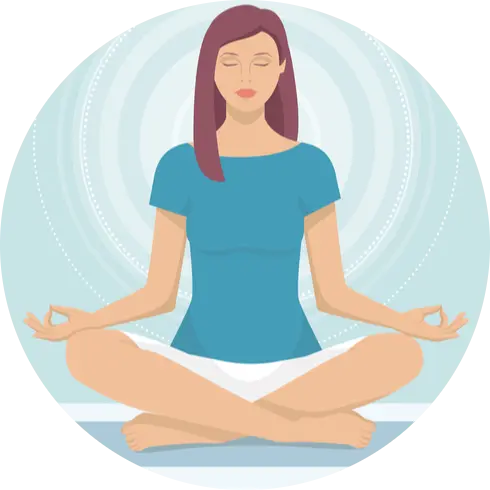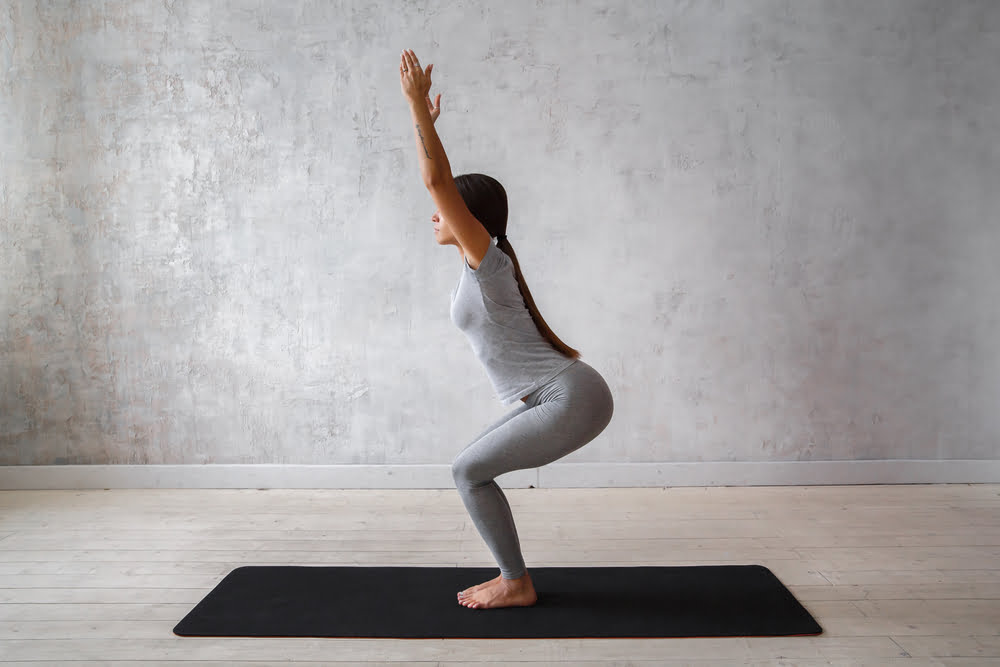Welcome to the world of yoga, where each pose carries a unique blend of physical, mental, and spiritual benefits. Among these, the Air Chair Pose, also known as Utkatasana or the Chair Pose, stands out for its ability to strengthen the body, improve posture, and cultivate balance and focus. In this comprehensive guide, we will delve into the depths of the Air Chair Pose, exploring its benefits, how to perform it correctly, precautions to take, common mistakes to avoid, and more.
Understanding the Air Chair Pose.
The Air Chair Pose derives its name from the seated position mimicked by sitting on an imaginary chair. This asana primarily engages the lower body muscles, including the thighs, calves, and glutes, while also targeting the core and back muscles. It’s a fundamental standing pose found in many yoga sequences, valued for its ability to build strength and stability.
Benefits of the Air Chair Pose.
- Strengthens Lower Body Muscles: The Air Chair Pose is a powerhouse for strengthening the quadriceps, hamstrings, and calves. Holding the pose activates these muscles, leading to increased muscle tone and endurance.
- Improves Posture: By engaging the core and back muscles, this pose promotes proper spinal alignment, which can help alleviate back pain and improve overall posture.
- Enhances Balance and Focus: Balancing on the balls of the feet while maintaining a seated position challenges the body’s equilibrium, thereby improving balance and concentration.
- Stimulates Circulation: The compression of the lower body in the Air Chair Pose encourages blood flow, which can help alleviate swelling and fatigue in the legs.
- Tones the Abdominals: While primarily a lower body pose, the Air Chair also engages the core muscles, leading to toning and strengthening of the abdominal muscles.
How to Perform the Air Chair Pose?
- Start in Mountain Pose: Stand tall with your feet hip-width apart, arms by your sides, and shoulders relaxed.
- Inhale and Raise Your Arms: As you inhale, raise your arms overhead, palms facing each other.
- Exhale and Bend Your Knees: On the exhale, bend your knees as if sitting back into an imaginary chair. Keep your thighs parallel to the floor, with your knees directly over your ankles.
- Engage Your Core: Draw your navel toward your spine to engage your core muscles. Keep your spine lengthened and shoulders relaxed away from your ears.
- Hold the Pose: Stay in the Air Chair Pose for 30 seconds to one minute, breathing deeply and evenly.
- Release the Pose: To release, straighten your legs on an inhale and lower your arms on an exhale, returning to Mountain Pose.
Precautions and Modifications.
While the Air Chair Pose offers numerous benefits, it’s essential to practice it safely and mindfully. Here are some precautions to keep in mind:
- Knee Health: If you have knee injuries or discomfort, avoid lowering into the pose too deeply. Instead, focus on a shallower bend in the knees to protect the joint.
- Low Back Sensitivity: Individuals with low back issues should be cautious when practicing the Air Chair Pose. Engage the core muscles to support the spine and avoid overarching the lower back.
- High Blood Pressure: Those with high blood pressure should avoid holding the pose for an extended period or practice it against a wall for support.
- Pregnancy: Pregnant individuals should avoid deep bends in the knees and focus on modified versions of the pose, such as using a chair for support.
Common Mistakes to Avoid.
- Collapsing Chest: Maintain an open chest and lifted heart to avoid collapsing forward, which can strain the upper back and shoulders.
- Protruding Knees: Keep the knees aligned over the ankles to prevent excess strain on the knee joints.
- Tucked Pelvis: Avoid tucking the pelvis under, which can lead to compression in the lower back. Instead, lengthen the tailbone down toward the floor.
- Gripping Toes: Keep the weight evenly distributed across the feet and avoid gripping the toes, which can create tension in the feet and ankles.
Scientific Evidence.
Several studies have explored the benefits of yoga poses similar to the Air Chair Pose. Research published in the International Journal of Yoga Therapy found that regular practice of yoga poses, including chair pose variations, led to improvements in lower body strength and balance in older adults.
Frequently Asked Questions.
Yes, beginners can practice the Air Chair Pose with modifications and by gradually increasing the duration of the hold.
The Air Chair Pose strengthens the leg muscles, improves balance, and enhances core stability, making it an excellent complement to running and other athletic activities.
Yes, the focused concentration required in the Air Chair Pose can help calm the mind and alleviate stress and anxiety.
Bottom Line.
In conclusion, the Air Chair Pose is a foundational yoga asana that offers a wealth of physical, mental, and emotional benefits. By practicing this pose mindfully and with proper alignment, individuals can strengthen their lower body, improve posture, enhance balance and focus, and experience a greater sense of well-being. Remember to approach the Air Chair Pose with patience, awareness, and respect for your body’s limitations, and let it elevate your yoga practice to new heights.


 Workout
Workout
 Meditation
Meditation





 Contact Us
Contact Us





